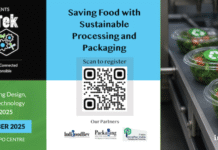Nestlé has created a unique chocolate made entirely from the cocoa fruit, using cocoa beans and pulp as the only ingredients and therefore not adding any refined sugar. The company plans to introduce the first product in Japan in the autumn of this year through its KitKat Chocolatory. Further products in other countries will follow next year, through some of Nestlé’s most popular confectionery brands.
According to Nestlé, it has developed a natural approach, which allows it to extract the pulp and use it in chocolate with no compromise on taste, texture and quality. Until now chocolate has been made with the addition of refined sugars. The company claims that this patented innovation delivers a great tasting chocolate using only one ingredient – the cocoa fruit.
Patrice Bula, head of Strategic Business Units, Marketing and Sales at Nestlé shared, “We are proud to bring chocolate lovers a new chocolate made entirely from the cocoa fruit without adding refined sugar. This is a real innovation which uses the natural sweetness of the cocoa pulp to provide a pure, novel chocolate experience.”
The cocoa fruit contains cocoa beans and cocoa pulp. The pulp surrounds the beans; it is soft, sweet and white in color. Some of the pulp is used in the fermentation of the cocoa beans after they are harvested, but a significant proportion is usually removed and the value is lost. Until now it has not been used as an ingredient to naturally sweeten chocolate.
With the recent announcement, Nestlé claims its leadership in the confectionery category by driving innovation and creating new, natural and exciting products. According to Nestlé, it was the first to bring Ruby chocolate to market in 2018 with KitKat, first in Japan and then across Europe.











